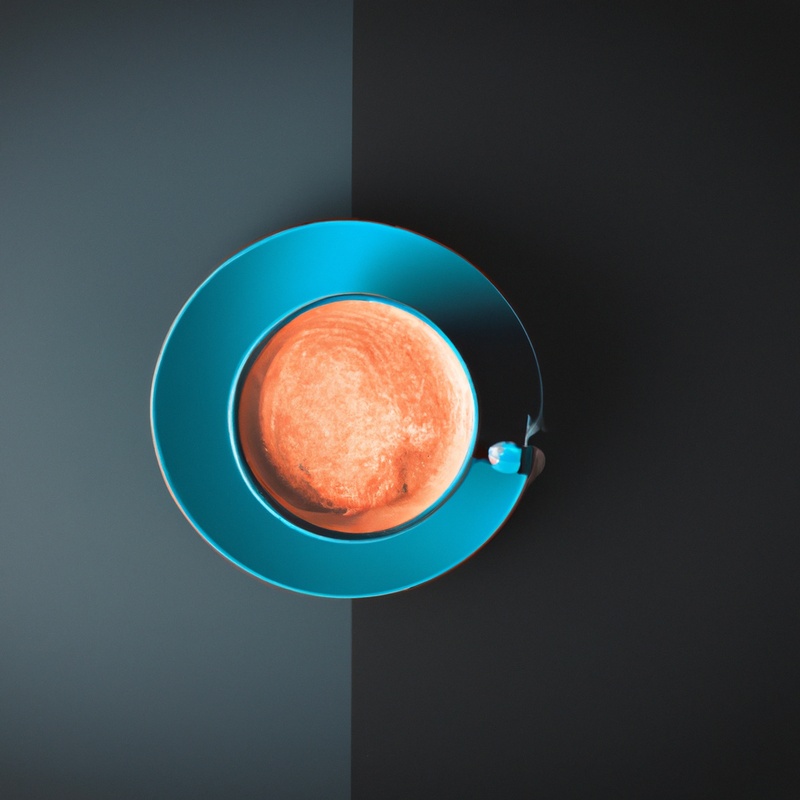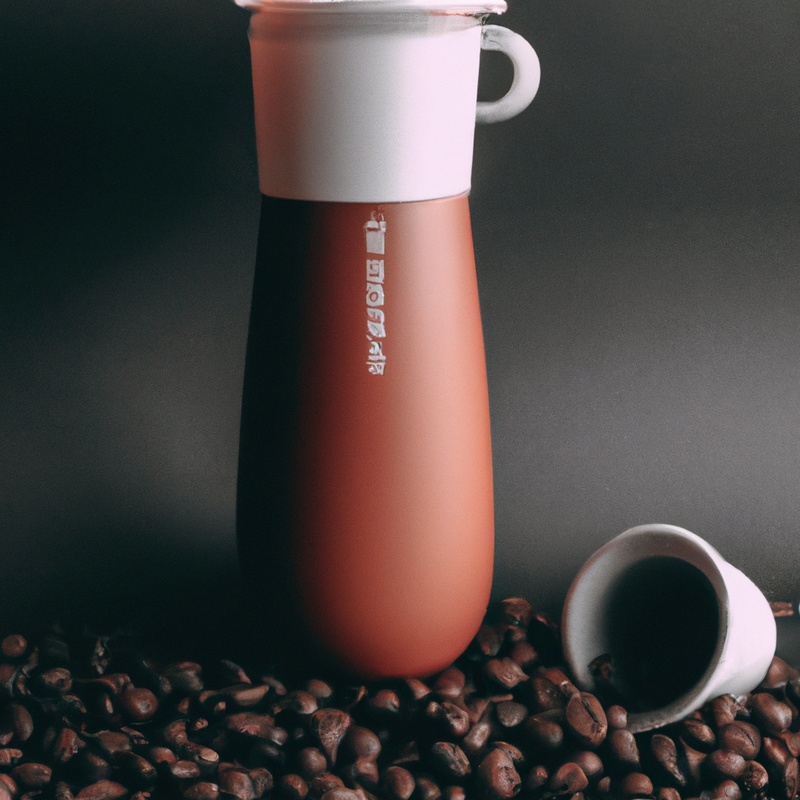Key Takeaways:
- Light roast coffees for cold brew offer bright and delicate flavors with subtle acidity.
- Medium roast coffees for cold brew provide a balanced combination of flavor and acidity.
- Dark roast coffees for cold brew deliver rich, bold flavors with lower acidity.
- The choice of roast level for cold brew depends on personal preference and desired taste profile.
Are you a fan of cold brew coffee? If so, you’re in for a treat! Today, we’re diving into the captivating world of roast levels and exploring the differences between light, medium, and dark roast coffees for cold brew.
What sets them apart?
How do they affect the flavor profile of your brew? And which one should you choose for that perfect chilled cup of java?
Join me as we uncover the answers to these questions and more, while mastering the art of cold brew coffee.
Get ready to take your coffee game to a whole new level!
| Light Roast | Medium Roast | Dark Roast | |
|---|---|---|---|
| Taste | Light, floral, fruity | Balanced, nutty, chocolatey | Bold, rich, caramelized |
| Caffeine Content | Higher | Moderate | Lower |
| Acidity | Higher | Moderate | Lower |
| Bean Color | Light brown | Medium brown | Dark brown |
| Brew Time | Shorter | Moderate | Longer |
| Body | Light | Medium | Full |
| Flavor Notes | Delicate fruitiness, floral aroma | Chocolate, nutty undertones | Bittersweet, smoky flavor |
| Best Served | As iced coffee | As traditional cold brew | As bold, concentrated cold brew |
Light Roast Coffee for Cold Brew
Light roast coffee for cold brew has a milder flavor profile compared to medium and dark roasts.
It is known for its bright acidity and subtle fruity and floral notes.
Definition of light roast coffee
Light roast coffee refers to coffee beans that are roasted for a relatively shorter duration and at lower temperatures compared to medium or dark roasts. This results in a lighter color and a milder flavor profile with more pronounced acidity and fruitiness.
Light roast coffee also retains more of the original characteristics of the coffee beans, allowing the unique flavors and nuances to shine through.
However, it generally contains less caffeine compared to darker roasts.

Characteristics of light roast coffee beans
Light roast coffee beans are characterized by their lighter color and mild flavor profile.
They are roasted for a shorter period of time compared to medium or dark roasts, which results in a higher caffeine content.
Light roasts often have bright acidity and delicate floral, fruity, or tea-like notes.
They preserve the natural flavors and nuances of the coffee beans, making them ideal for those who prefer a more nuanced and lighter-bodied cup of coffee.
Light roast coffees are also known for their crisp and clean finish.
Benefits and drawbacks of using light roast coffee for cold brew
Benefits:
- More pronounced flavors: Light roast coffee retains more of its original flavor profile, allowing for a more vibrant and nuanced taste experience in cold brew.
- Higher caffeine content: Light roast coffee typically contains more caffeine than darker roasts, providing an extra energy boost to start your day.
- Less acidity: Light roast coffees tend to have lower acidity levels, making them a gentler option for individuals with sensitive stomachs.
Drawbacks:
- Less body: Light roast coffee may have a lighter body compared to medium or dark roast coffees, which some people may find less satisfying or fulfilling.
- Potentially more tannins: The lighter roast can lead to a higher presence of tannins, which can result in a slightly bitter or astringent taste if not brewed properly.
- Longer brew time: Light roast coffee often requires a longer brew time in cold brew preparation to fully extract its flavors, requiring more patience and planning.
Overall, using light roast coffee for cold brew can offer a unique and flavorful experience, but it may not be everyone’s preferred choice due to its lighter body and longer brewing time. Experimenting with different roast levels can help you find your perfect cup of cold brew.
Recommended brewing techniques for light roast coffee in cold brew
When brewing light roast coffee for cold brew, there are a few key techniques to keep in mind. Start by using a coarser grind size to prevent over-extraction.
Next, use a higher coffee-to-water ratio for a stronger flavor.
Steep the coffee in cold water for at least 12 hours, but no more than 24 hours, to ensure a smooth and balanced brew. Finally, experiment with different brewing times to find your preferred taste profile.
Enjoy your light roast cold brew!
Medium Roast Coffee for Cold Brew
Medium roast coffee is a popular choice for cold brew due to its balanced flavor and smoothness.
Medium roast coffee beans have a moderate level of acidity and exhibit a well-rounded flavor profile with notes of both sweetness and acidity.
Definition of medium roast coffee
Medium roast coffee is a type of coffee that falls between light and dark roasts in terms of flavor and color.
It is roasted for a specific amount of time to achieve a balanced taste and aroma.
Medium roast coffee tends to have a medium body, moderate acidity, and a well-rounded flavor profile.
It offers a pleasant balance between the brightness of light roasts and the deep, bold flavors of dark roasts.
The beans are typically roasted until they reach a medium brown color, which results in a flavor profile that is smooth, slightly sweet, and has subtle hints of chocolate or caramel.
Characteristics of medium roast coffee beans
Medium roast coffee beans are known for their balanced flavor and moderate acidity.
They have a medium brown color and retain more of their original characteristics compared to lighter or darker roasts.
These beans have a smooth and mellow taste, with flavors ranging from chocolate to nutty, and sometimes a hint of fruitiness.
Medium roast coffee beans are versatile and can be enjoyed in various brewing methods, including cold brew.
They provide a well-rounded and satisfying cup of coffee, making them a popular choice among coffee lovers.

Benefits and drawbacks of using medium roast coffee for cold brew
There are both benefits and drawbacks to using medium roast coffee for cold brew.
One benefit is that medium roast coffee tends to have a balanced flavor profile, with both acidity and sweetness.
This can result in a well-rounded and smooth cold brew.
However, a drawback is that medium roast coffee may not provide as pronounced flavor notes as light or dark roast coffee.
So, if you prefer a bolder or more distinctive taste, medium roast may not be the best choice for your cold brew.

Recommended brewing techniques for medium roast coffee in cold brew
To brew medium roast coffee for cold brew, start by using a coarse grind size to prevent over extraction.
Use a coffee-to-water ratio of 1:8 to 1:10, depending on your preferred strength.
Steep the coffee grounds in cold filtered water for 12-16 hours in the refrigerator.
After steeping, strain the coffee using a fine mesh filter or cheesecloth.
Dilute the cold brew concentrate with water to your desired taste.
Serve over ice and enjoy!
Dark Roast Coffee for Cold Brew
Dark roast coffee is a bold and rich option for cold brew, with a deep flavor profile and lower acidity.
It’s popular for those who enjoy a robust and full-bodied cold brew experience.
Definition of dark roast coffee
Dark roast coffee is a type of coffee bean that has been roasted for a longer period of time, resulting in a dark, rich flavor profile.
The beans are typically roasted until they reach a higher internal temperature, which leads to a deeper color and more pronounced smoky, chocolaty taste.
Dark roast coffee can have a more bitter or burnt flavor compared to lighter roasts, but it also tends to have lower acidity.
It is often preferred by those who enjoy a bold and robust cup of coffee.
Characteristics of dark roast coffee beans
Dark roast coffee beans are characterized by their bold and intense flavors. They undergo longer roasting times, resulting in a deep, rich taste profile.
The beans have a shiny, dark brown color and an oily surface.
Dark roast coffees tend to have lower acidity and a fuller body, with notes of chocolate, caramel, and even smokiness. Due to the extended roasting process, they are less caffeinated compared to lighter roasts, but still offer a robust and satisfying cup of coffee.
Benefits and drawbacks of using dark roast coffee for cold brew
Using dark roast coffee for cold brew has both benefits and drawbacks.
Benefits:
- Bold flavor: Dark roast coffee has a rich, bold flavor that can stand up to the long brewing process of cold brew, resulting in a strong and robust cup of coffee.
- Less acidity: Dark roast coffee is often less acidic than lighter roasts, which can lead to a smoother and less bitter cold brew experience.
- Longer shelf life: The darker the roast, the longer the beans can be stored. This means that if you make a large batch of cold brew using dark roast coffee, it can stay fresh for an extended period.
Drawbacks:
- Potential bitterness: Dark roast coffee can sometimes be more bitter than lighter roasts, which may not be to everyone’s taste preference.
- Overpowering flavors: The intense flavors of dark roast coffee can overpower any subtle tasting notes or nuances that lighter roasts may offer, resulting in a less complex cold brew.
- Reduced caffeine content: Dark roast coffee generally has slightly less caffeine than lighter roasts due to longer roasting times, so if you’re looking for a strong caffeine kick, you may prefer a lighter roast for your cold brew.
Recommended brewing techniques for dark roast coffee in cold brew
To brew the perfect dark roast coffee for cold brew, start by using a coarse grind to extract the rich flavors without bitterness.
Use a coffee-to-water ratio of 1:8 for a stronger brew.
Mix the coffee grounds with cold, filtered water and let it steep in the fridge for 12-24 hours.
After steeping, filter the coffee using a fine mesh or cheesecloth to remove any sediment.
The resulting concentrate can be diluted with water or milk to your preferred strength.
Enjoy your smooth and bold cup of cold brew!
Frequently Asked Questions
Can I mix different roast levels in my cold brew?
Yes, you can mix different roast levels in your cold brew! Mixing different roast levels can add complexity and depth to your cold brew.
Lighter roasts generally have brighter, floral flavors, while medium roasts have a balanced flavor profile.
Darker roasts are bolder and often have chocolate or smoky notes.
Experimenting with different roast levels allows you to create a unique flavor profile that suits your preferences.
So go ahead and have fun exploring different combinations of roast levels in your cold brew!
Does the roast level affect the caffeine content in cold brew?
The roast level does not significantly affect the caffeine content in cold brew coffee. The caffeine content is primarily determined by the type and origin of the coffee beans used.
However, darker roast coffees tend to have a bolder flavor, which can create the perception of a stronger caffeine kick.
It’s important to note that the brewing process itself, such as the steeping time and ratio of coffee to water, has a more significant impact on the caffeine strength of cold brew.
How long should I steep the coffee for cold brew?
Steeping time for cold brew can vary depending on personal preference, but a general guideline is to steep the coffee for 12-24 hours.
Shorter steeping times, such as 12 hours, tend to produce a lighter flavor, while longer times, around 24 hours, result in a stronger, more concentrated brew.
Experiment with different steeping times to find your perfect balance of flavor and strength.
Remember to strain and refrigerate the cold brew after steeping for the best taste.
Which roast level is best for a strong and bold cold brew?
For a strong and bold cold brew, dark roast coffee is the best choice.
The longer roasting process gives dark roast coffee a rich and robust flavor, which translates well into cold brew.
The boldness of the coffee is enhanced by the full-bodied and smoky notes that are characteristic of dark roast beans.
This roast level also provides a higher concentration of caffeine, giving your cold brew an extra kick.
So, if you’re looking for a strong and bold cold brew, go for dark roast coffee.
Final Verdict
The choice between light, medium, and dark roast coffees for cold brew ultimately comes down to personal preference.
Light roast coffee brings out more nuanced flavors, medium roast strikes a balance between flavor and acidity, while dark roast offers a bolder and more robust taste.
Each roast level has its own benefits and drawbacks, so it is important to consider what you value most in your cold brew.
Experiment with different brewing techniques and ratios to find the perfect balance of flavor, strength, and smoothness.
Happy brewing!
